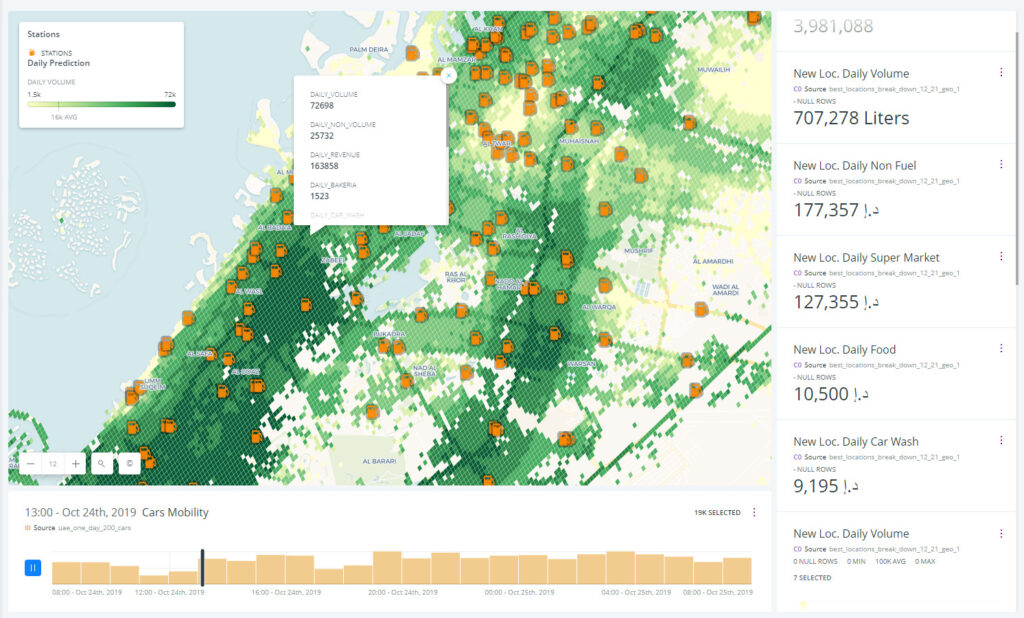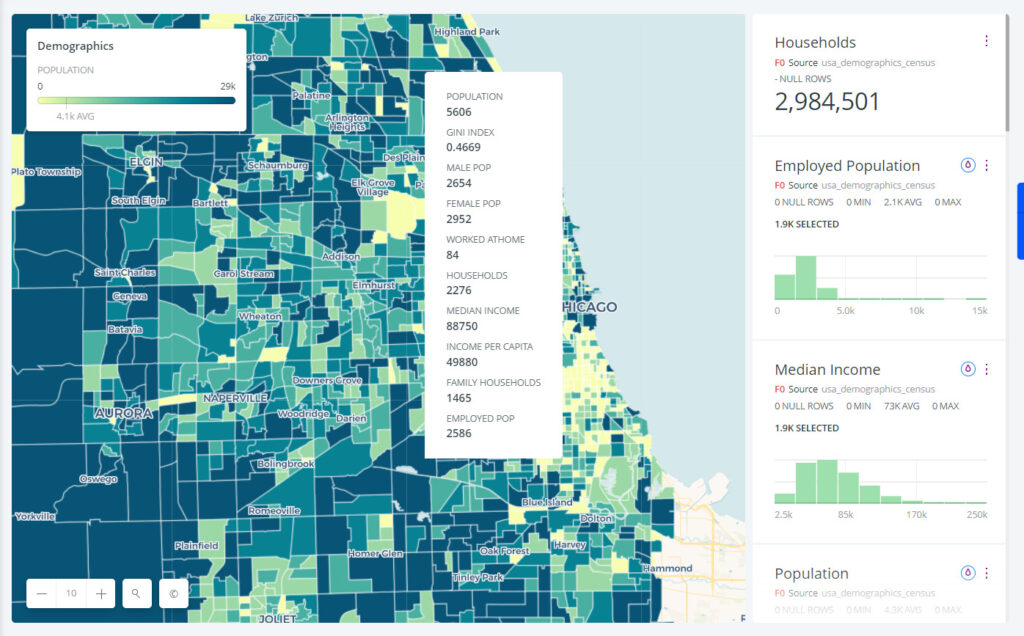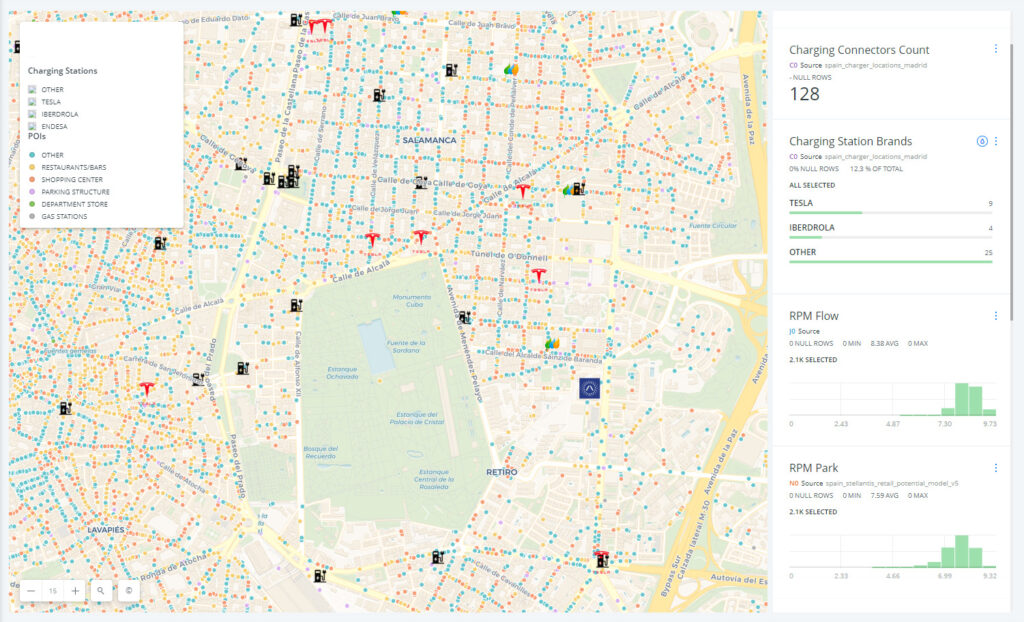Are you looking to make investments in your retail network? Let Locatium tells you about its specialty finding the best locations for new service stations and optimizing retail networks to ensure maximum performance at each location. At Locatium, we offer an AI/ML Omnichannel Networks Planning Optimization Tool for Retailers that can be tailored to meet the specific needs of our clients. With our customized approach, we can achieve the perfect solution for your business.
Opening a new service station is a substantial investment, and its success largely depends on choosing the right place. To make an informed decision, it’s crucial to evaluate several factors that can impact the profitability and sustainability of your site. In this article, we will discuss some of the critical elements that you should consider when selecting a location for your new service stations.
Success largely depends on its quality, its coverage, and how we analyze the data. Our datasets have global coverage, and the correlations we make with them generate powerful results. In the case of determining the optimal number of new service stations and their locations, it’s important to take into account the following aspects:
- Mobility and Traffic:
Mobility data has revolutionized how retailers plan and expand their networks. By analyzing the digital trail of consumer movements, we can gain valuable insights into their behavior, preferences, and needs, enabling us to optimize store networks, enhance the customer experience, and boost sales.
Through analyzing foot traffic patterns and commuter routes, retailers can pinpoint areas with high consumer demand and tailor their store locations and product offerings. This is also utilized to predict future consumer trends and enable retailers to adjust their store network.
- Population Density and Human Mobility:
By getting started with population density data, we can have an approximation of the concentration of potential customers residing in a particular area. Then, with access to dwell analysis, home location identification, visitation analytics, and other data, retailers can identify areas with high foot traffic and customer demand, enabling them to strategically place their stores in locations that are most likely to attract and retain customers.
These data analyses can provide retailers with insights into an area’s demographics, including age, income, and education level. That’s why, by identifying areas with little competition, retailers can tap into potential markets and gain a competitive advantage. In addition, information is obtained on the products and services in demand in a specific area, allowing you to adapt your marketing campaigns and offers to the specific needs and preferences of customers in each location.
- Consumer Data:
This data encompasses purchase history, demographic information, and online browsing behavior, which can be collected through various channels such as social media, loyalty programs, and online transactions. Through this data, we can gain insights into each customer’s preferences, needs, and buying patterns, enabling us to offer personalized product recommendations, promotions, and discounts. This data helps retailers understand which products are selling well and which are not, allowing them to adjust their inventory levels accordingly.
Consumer data has two significant impacts on retailers. Firstly, to personalize the shopping experience for individual customers, build stronger relationships with customers, increase customer loyalty, and ultimately drive sales. Moreover, it can be used to improve supply chain and inventory management processes, minimizing waste and improving profitability by ensuring retailers have the right products in stock at the right time. Additionally, this data can be used to optimize marketing campaigns.
- Advanced Demographics:
Now, we can get a more comprehensive and in-depth understanding of consumer behavior, preferences, and demographics that goes beyond basic demographic information such as age, gender, and location. It may involve considering factors such as lifestyle, interests, and values, and can be gathered through various methods such as surveys, social media monitoring, and transactional data analysis.
The use of advanced demographics has a significant impact on the network because retailers can gain a better understanding of their customers and use this information to tailor their products, services, and marketing strategies to meet their needs and preferences more effectively. Moreover, it enables the identification of new market opportunities, staying ahead of emerging trends, and building stronger relationships with their clients.
- Real Estate insights:
Real estate insights provide businesses with valuable information about a potential location, including the location itself, the surrounding area, and its demographics. This allows businesses to make informed decisions about where to open new stores or expand existing ones.
It provides information about the number of people living or working in a specific area, as well as the amount of pedestrian traffic in the surrounding area. This data can help retailers understand local demand and competition to tailor their product offerings and gain a competitive advantage. Real estate insights can also inform decisions about store design and layout to improve the shopping experience, increase customer satisfaction, and drive sales.
- Economic Indicators:
When deciding on a location for your service station, it’s important to consider the economic conditions of the area. Areas with a strong economy and low unemployment rates tend to have residents with higher disposable incomes. This can result in increased spending on things like gasoline and car maintenance. Moreover, robust economies often attract more businesses and residents, which in turn can lead to greater demand for your services due to increased traffic.
- Point of interest:
Points of interest (POIs) refer to locations or attractions that receive a considerable amount of foot traffic, such as popular tourist spots, transportation hubs, and entertainment venues. These locations can significantly impact the retail network as they attract a high number of potential customers, creating opportunities for retailers to increase their sales and brand exposure.
- Competition:
To choose the best location for a new service station, it’s crucial to research the existing competition in the area. This involves identifying established service stations nearby and analyzing the services they offer. By doing so, you can determine how to differentiate your business from theirs and create a unique selling proposition. This information will also help you identify gaps in the market and opportunities to stand out from the competition.
- Accessibility:
When evaluating a potential location for a service station, it is important to consider its accessibility. This means assessing whether the location is conveniently located near major roads or highways, whether there is sufficient parking available for customers, and whether there are any nearby amenities, such as restaurants or shopping centers, that could draw in potential customers.
To decide where to open a new service station, it is essential to take into account the factors mentioned above. Population, human and vehicle mobility, real estate, demographic trends, competition, consumer data, economic indicators, and accessibility must be evaluated. But always remember, the more quality data you have, the more accurate your predictions and results will be. An informed decision can then be made that positions your service station for long-term success.












